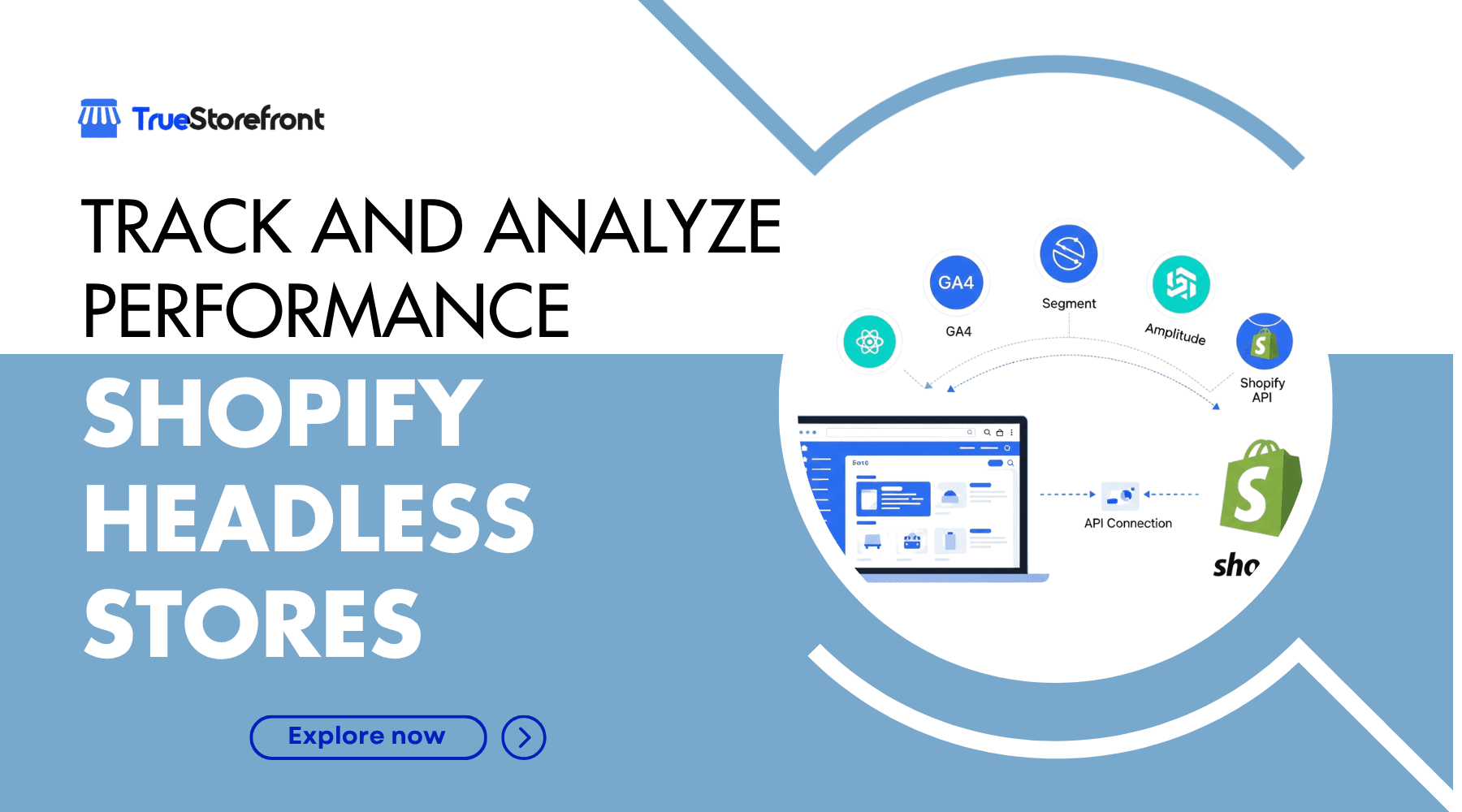In the evolving world of ecommerce, data-driven decisions determine the success of every store. When running a Shopify headless store, you gain design flexibility and performance power but you also face new challenges in tracking and analytics. Unlike traditional Shopify setups, a headless architecture separates the front end from the back end, making standard tracking tools less straightforward.
So how can you accurately measure performance, conversions, and user behavior in a Shopify headless environment? In this article, we’ll break down the best strategies, integrations, and metrics you need to implement to ensure you’re making smart, data-backed decisions.
I. Why Analytics Matter for Headless Shopify Stores
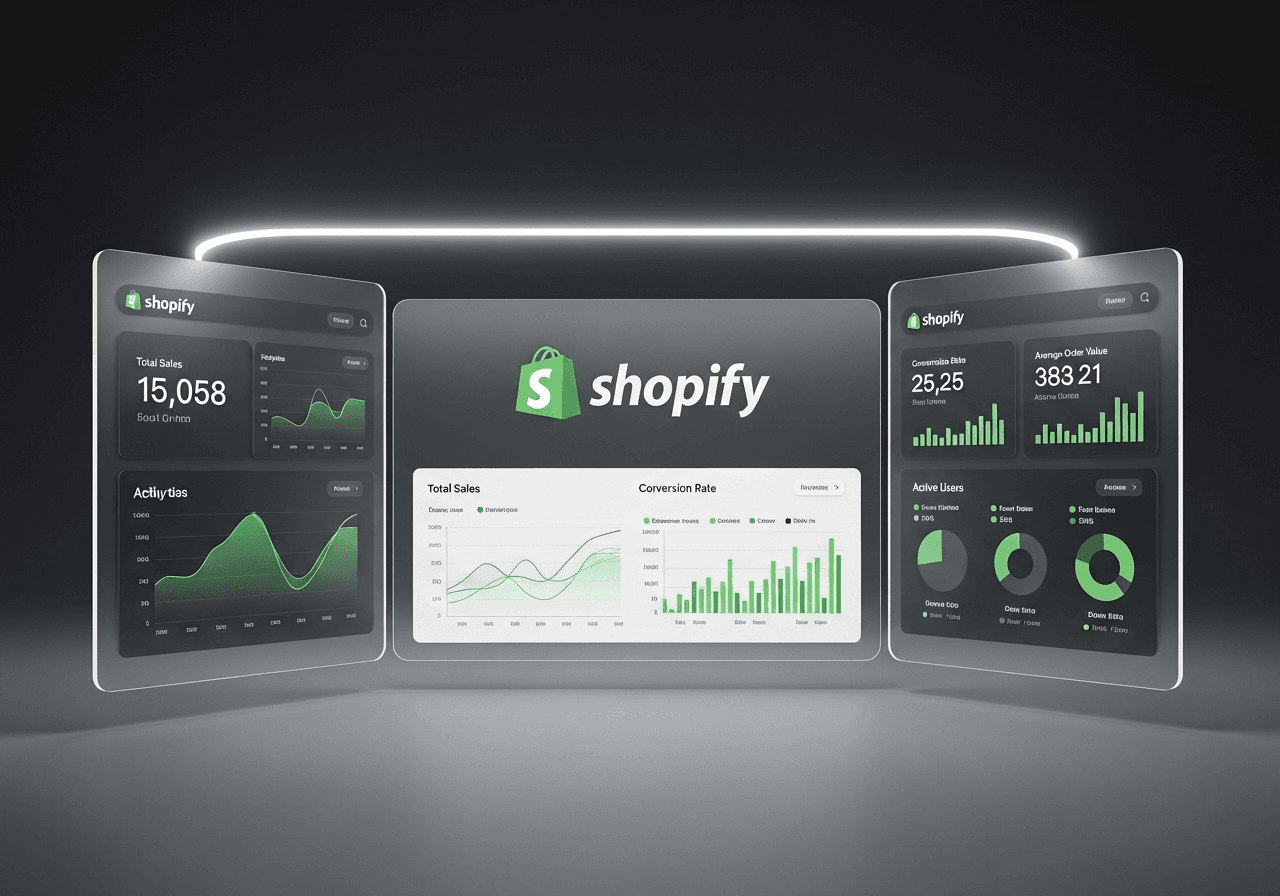
Headless commerce gives you freedom to build custom storefronts using frameworks like Next.js, Hydrogen, or React, but it also decentralizes data collection. You need analytics tools that can capture data across APIs, front-end frameworks, and backend systems.
Key reasons analytics are critical for headless setups:
- Unified data visibility: Combine data from multiple touchpoints (web, mobile, PWA).
- Performance optimization: Track Core Web Vitals, page load time, and user flows.
- Conversion tracking: Measure product performance, cart abandonment, and checkout flow.
- Marketing ROI: Evaluate campaign effectiveness across all digital touchpoints.
Without proper analytics, you risk making decisions based on incomplete or inaccurate data.
II. Core Metrics to Track in a Shopify Headless Environment
In traditional Shopify, you can easily view analytics through the Shopify Admin Dashboard. In headless setups, you need to implement tools that track similar and often more advanced metrics.
Here are the core metrics to monitor:
III. Setting Up Analytics in Headless Shopify
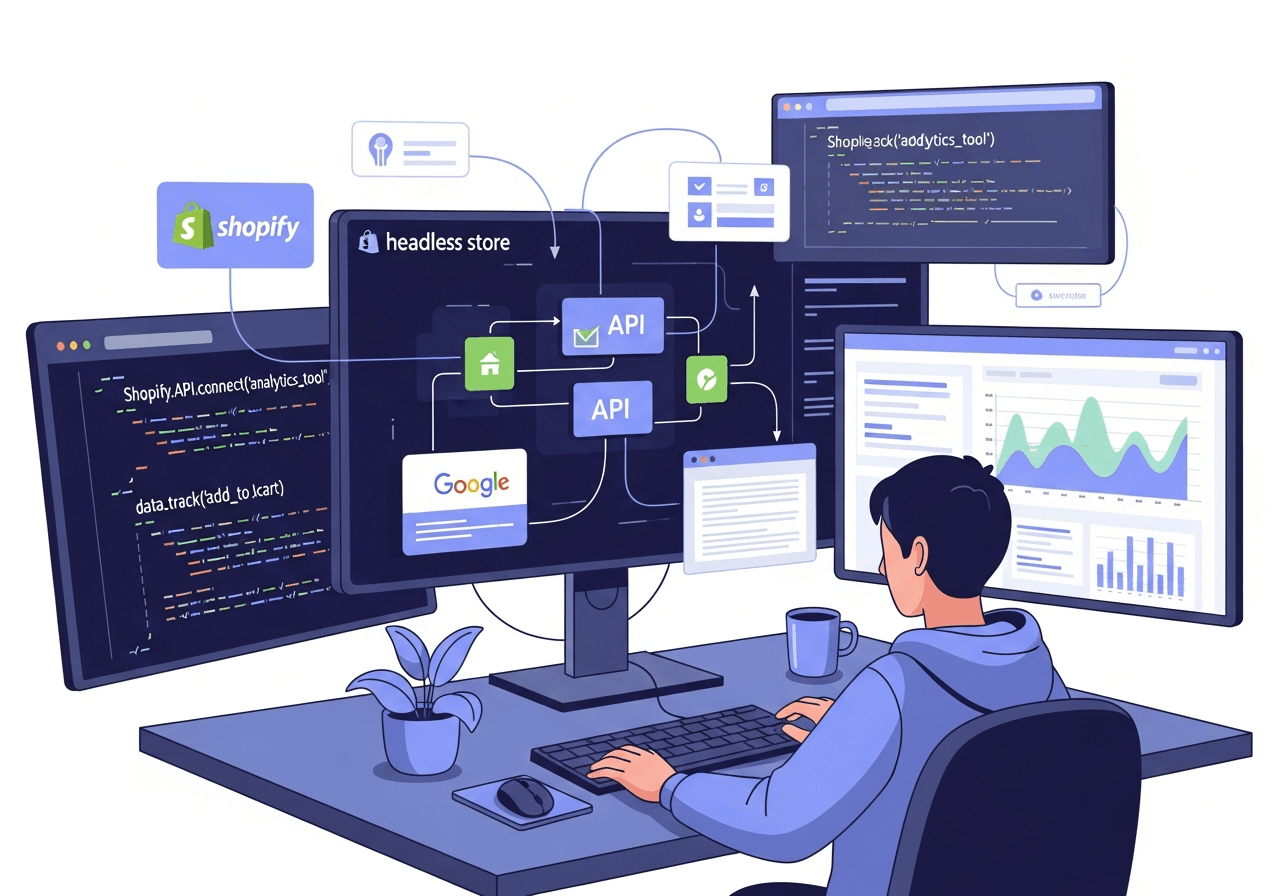
Since your storefront and backend are decoupled, you must configure analytics at both levels: the frontend framework (e.g., Next.js or Hydrogen) and Shopify backend.
Step 1: Implement Tracking Scripts in the Frontend
Most headless stores use a modern frontend framework. You can manually inject or use tag managers to deploy analytics scripts.
- Google Tag Manager (GTM): Ideal for deploying multiple tags without touching the code repeatedly.
- Google Analytics 4 (GA4): Essential for tracking page views, user engagement, and conversions.
- Meta Pixel / TikTok Pixel: For remarketing and ad performance analysis.
Tip: Implement server-side tracking to ensure data accuracy despite browser restrictions or ad blockers.
Step 2: Sync Backend Data from Shopify
Your backend holds valuable ecommerce data including product performance, inventory, and sales. Integrate these data points with your frontend analytics.
Tools like Shopify’s GraphQL Admin API or Shopify Analytics API can be used to:
- Track real-time sales performance.
- Monitor order values and refunds.
- Merge transactional data with customer behavior metrics.
Step 3: Connect APIs for Unified Insights
Use middleware analytics solutions like Segment, Amplitude, or Mixpanel to centralize data from multiple sources. These platforms collect user actions from your headless frontend and sync them with Shopify backend data for full-funnel visibility.
IV. Best Analytics Tools for Shopify Headless Stores
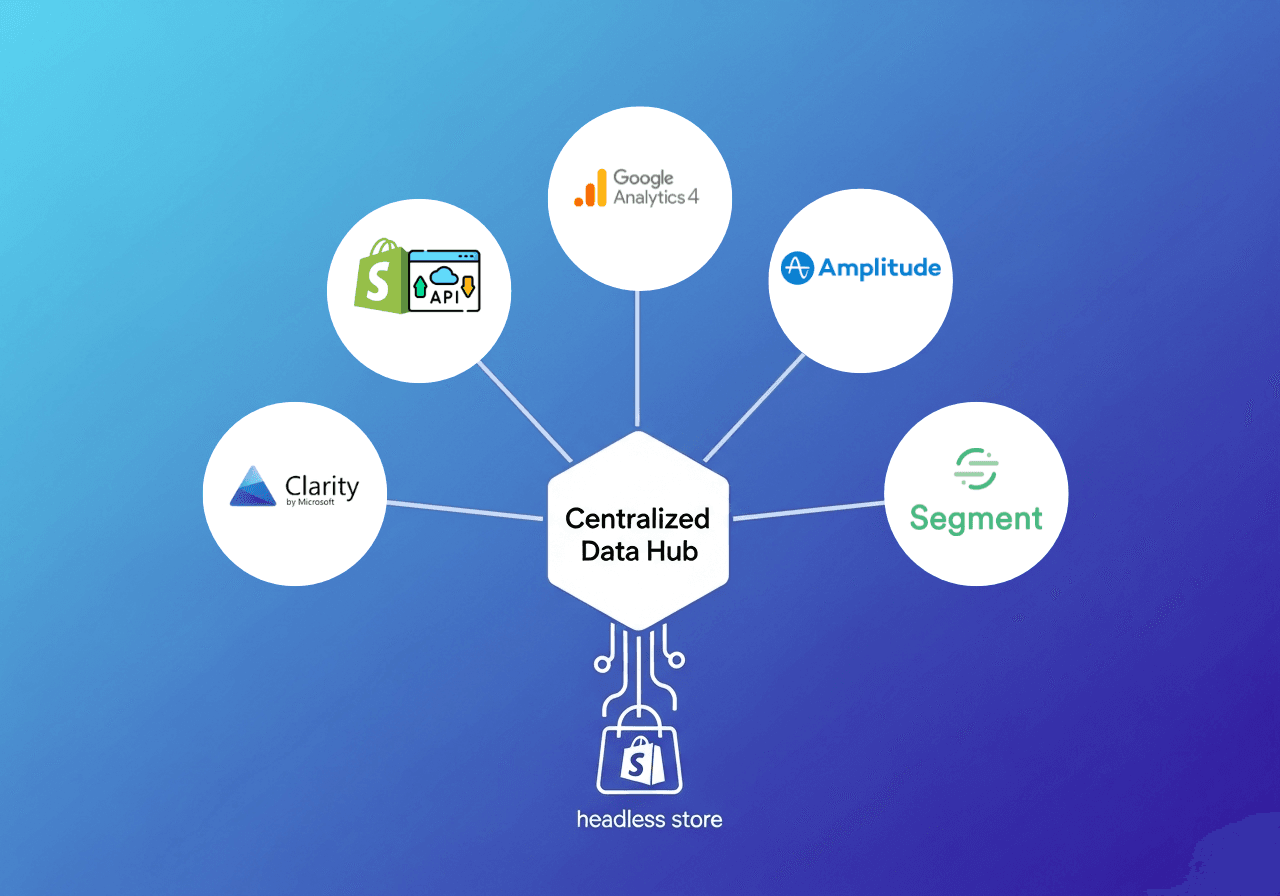
To ensure accuracy and scalability, choose tools that are API-compatible and can integrate seamlessly with custom frontends.
1. Google Analytics 4 (GA4)
- Use case: Track all user behavior, traffic, and conversions.
- Integration method: Via GTM or directly embedded scripts in Hydrogen/Next.js.
- Key advantage: Enhanced event-based model ideal for headless sites.
2. Shopify Analytics API
- Use case: Retrieve sales and order data directly from Shopify.
- Key advantage: Access real-time store performance metrics.
3. Segment
- Use case: Centralize and route event data to multiple analytics destinations.
- Key advantage: Reduces duplication and simplifies API management.
4. Amplitude
- Use case: Product analytics including retention, funnel analysis, and user journeys.
- Key advantage: Excellent for advanced behavioral insights.
5. Hotjar / Microsoft Clarity
- Use case: Visual analytics such as heatmaps and session recordings.
- Key advantage: Understand user experience and interaction depth.
6. Lighthouse / Web Vitals
- Use case: Measure performance speed, accessibility, and SEO readiness.
- Key advantage: Optimize your headless frontend performance metrics.
V. Integrating Ecommerce Tracking and Conversion Goals
To measure the success of your marketing campaigns and product performance, it’s vital to implement ecommerce tracking correctly.
Set Up Conversion Events
- Track key actions: Add to cart, checkout initiation, purchase, subscription.
- Use GA4 custom events or Facebook CAPI for deeper conversion tracking.
Enable Server-Side Tracking
With headless architecture, many events occur outside standard browser contexts. Server-side tracking (via GTM Server or custom middleware) ensures accurate data delivery and avoids data loss.
Leverage Enhanced Ecommerce
GA4’s enhanced ecommerce module helps you:
- Analyze product impression vs. purchase ratio.
- Identify top-performing product categories.
- Optimize your conversion funnel.
VI. Optimizing and Reporting Performance Data
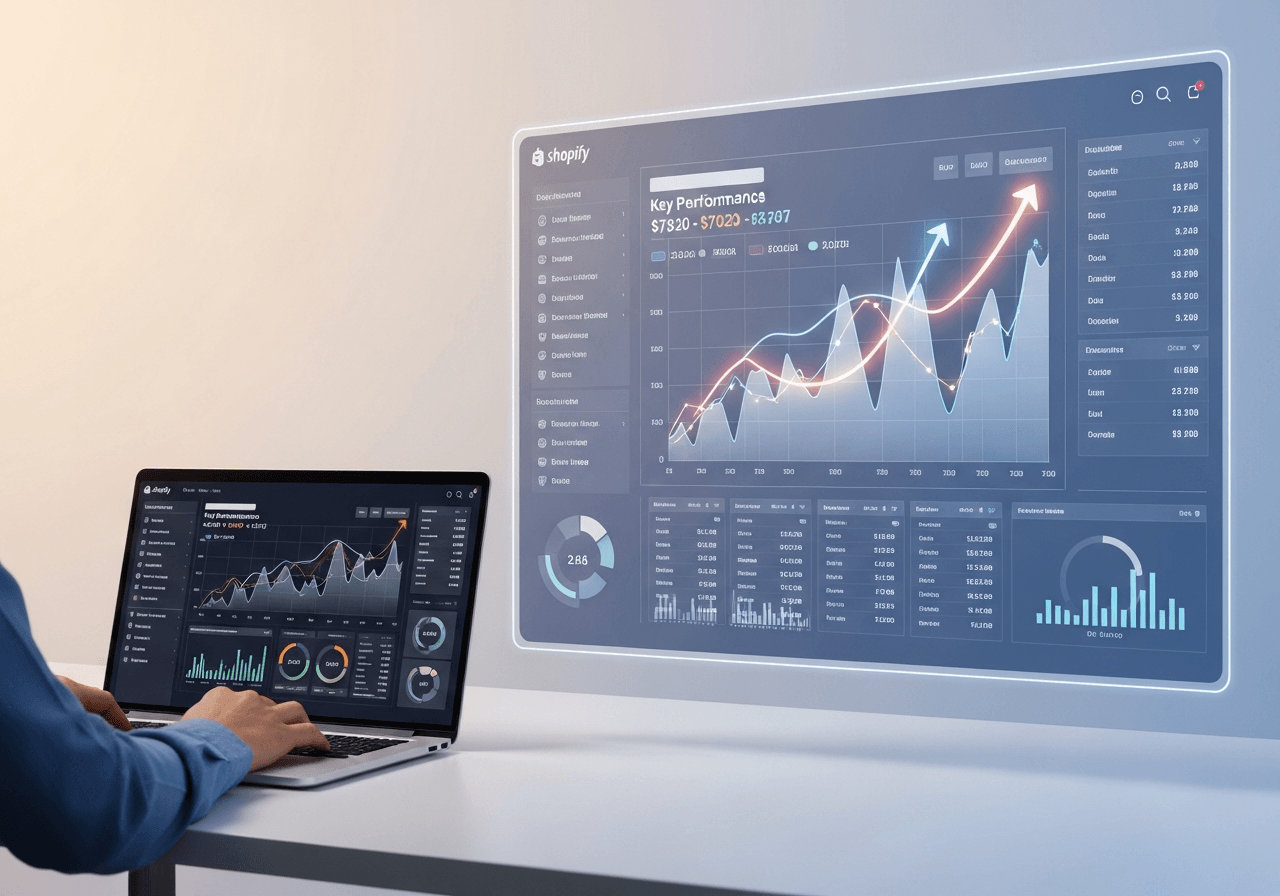
Tracking data is only the first step. Analyzing and acting on that data is what drives growth.
Create Dashboards
Use Google Data Studio or Looker Studio to visualize:
- Traffic by source
- Conversion rates by page
- Performance by device
Compare Trends
Benchmark your KPIs over time such as week-over-week or month-over-month to detect seasonal patterns and performance anomalies.
Automate Reporting
Automate weekly reports integrating Shopify Analytics API and GA4 via Zapier or Databox to keep your marketing and development teams aligned.
VII. Common Challenges and Solutions
VIII. Conclusion: Get Performance Insights That Matter
Tracking and analyzing performance in Shopify headless stores is not just about data but about enabling smarter growth. With the right analytics tools, APIs, and integrations, you can achieve complete visibility into your ecommerce performance.
When you harness GA4, Shopify Analytics API, Segment, and performance monitoring tools, you gain insights that directly influence revenue growth, customer experience, and long-term brand success.
Ready to unlock your store’s full potential? Start integrating analytics into your Shopify headless setup today and get the performance insights that drive data-powered decisions.
Read more:
